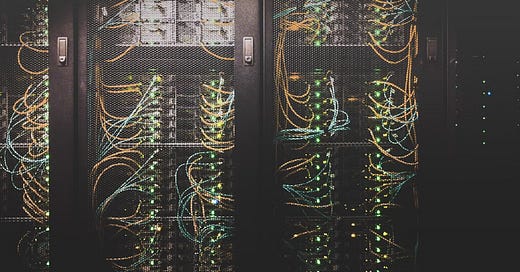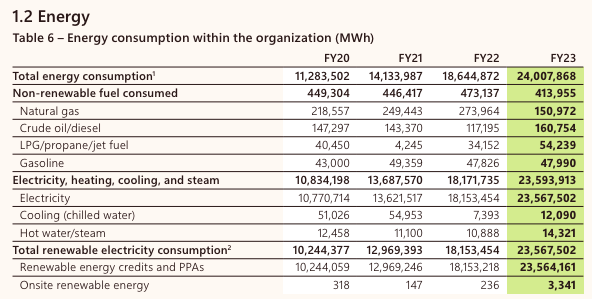AI demand is setting tech climate goals back
Welcome back to Cautious Optimism! It’s Tuesday, July 3rd, 2024. Today, we’re looking at how AI compute demand is pushing back big tech climate goals, and riffing through a host of IPO updates to kick off Q3. Let’s have some fun! — Alex
Trending Up: Kamala Harris … unity against the far-right … the need for rebuilding funds in the wake of Hurricane Beryl … Tesla’s stock after better-than-expected deliveries … BYD, expected to take Tesla’s crown …
Trending Down: The price wind energy versus coal in China (BG) … coal power production in China (FT) … Koo … Microsoft’s OpenAI hegemony (BG) … cybersecurity regulations …
Power, and the AI boom
This year, China has seen extreme weather bake parts of its landmass and flood others. Managing water resources in the country is no small feat. As The Economist recently pointed out, with “6% of the world’s freshwater China must quench the thirst of 20% of the world’s people.” The same piece goes on to note that the Chinese Communist Party is loathe to allow the market to set the price of water, leading to (emphasis added):
absurd outcomes. A report released in April by China Water Risk, a non-profit, found that 41% of China’s data centres, which use lots of water for cooling, are located in areas prone to drought. So are many of China’s water-guzzling coal-fired power plants. In the arid northern province of Hebei, which was once crisscrossed by camel caravans, one now finds ski slopes covered in artificial snow.
The data center point is not a small one. Around the world today, we’re seeing a massive build-out of data-crunching computing hubs. Picking stories from the last few days:
Google is putting $1 billion more into its Council Bluffs Data Center after a $350 million expansion last year. The company is also investing $1.3 million “toward water preservation and conservation efforts in the Missouri River valley” as part of the project, WOWT reports. (July 2, 2024)
Meta is spending $800 million to build a new “715,000-square-foot data center in Cheyenne,” Wyoming, KGAB reports. (July 2, 2024)
Amazon snagged approval to build a second data center in Chile, BNAmericas reports. (July 2, 2024)
Microsoft is investing $2.4 billion into a “huge data centre project in northeastern Spain,” AFP reports. (July 3, 2024)
Two trends are driving the massive spend: demand for AI-related computing and the need to follow data residency rules.
As a result, if you sell power, water, and hardware that data centers can consume, it’s a good time to be in business. Business Insider made that point earlier in July, writing that “some of the main winners of the AI boom […] include unflashy companies that provide electricity and data-center services.” (The same piece linked to this Goldman dataset, which projects that “AI is poised to drive 160% increase in data center power demand”.)
Power concerns abound, but the market has spoken. AI is in, and folks want it.
The resulting demand for data center capacity is so great that both Microsoft and Google are seeing their power consumption and greenhouse gas (GHG) emissions shoot higher. Here’s Microsoft’s consumption table through its fiscal 2023 (the company just wrapped its fiscal 2024):
And here’s how Google described its own 2023 results:
In 2023, our total GHG emissions were 14.3 million tCO2e, representing a 13% year-over-year increase and a 48% increase compared to our 2019 target base year. This result was primarily due to increases in data center energy consumption and supply chain emissions. As we further integrate AI into our products, reducing emissions may be challenging due to increasing energy demands from the greater intensity of AI compute, and the emissions associated with the expected increases in our technical infrastructure investment.
I want to point out that while Microsoft and Google are using more power, they are also committed to lowering their carbon footprint over time, investing in renewable energy and conservation efforts, and are open about their direct and indirect emissions. Points are worth awarding here, especially as many in the technology community push back against ESG-style reporting.
The issue that has yet to be resolved is where all needed net new electricity generation will come from; it takes time to build new generation capacity, and I doubt that we’ll be able to meet all the new demand with green power inputs in the required timeframe.
Tensions, however, are how we make progress. What we need very much right now is a host of new power-gen startups with ideas for neat, quick, economically viable ways to generate more power. Otherwise, we’re going to throw our climate further out of balance and reduce limited water supplies in a manner that we will regret later on.
AI doomers complain that we’re incinerating the planet to create disposable, bad art. As far as slogans go, it’s a good one. I disagree with its thrust — that modern AI is merely a toy — but share the concern about our little planet. It’s the only one we have, and as the news item we started this discussion with points out, we’re seeing climate stress bite. Here’s to finding a way forward that allows us to push the AI envelope without making negative progress on our species-level climate goals.
IPO updates!
Apart from Solera’s upcoming debut and the recent Webtoon debut, who else is on the docket? A few names. Let me catch you up:




